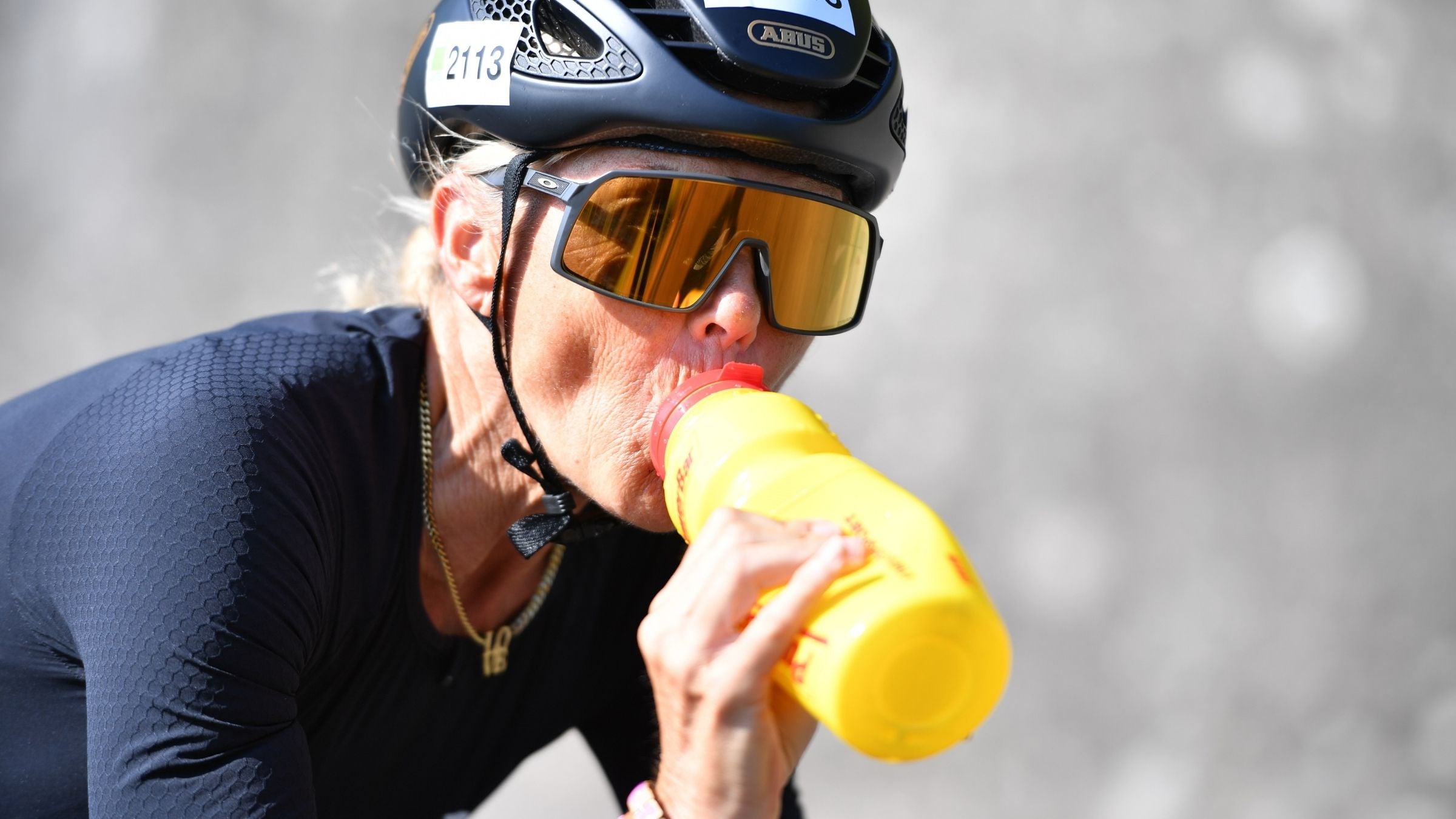If you buy through our links, we may earn an affiliate commission. This supports our mission to get more people active and outside.Learn about Outside Online's affiliate link policy
How to Choose the Best Sports Drink for Triathlon

(Photo: Alexander Koerner/Getty Images)
The triathlete’s stomach cramping kept getting worse as the race went on. She kept sucking down the sports drink in her bottle in hopes that it would help with suspected dehydration. Instead, it only exacerbated the diarrhea, nausea, and bloating.
What went wrong? It’s possible what she thought was the solution—drinking more to stave off dehydration—was actually the problem. A sports drink can help you cross the finish line strong, but it can also lead to the dreaded DNF by causing gastrointestinal distress. The trick is choosing the right sports drink for your needs. Not all drinks are created equal, and what works for one triathlete may not work for another.
But with so many sports drinks to choose from, how do you know which one to use? Here are some tips to help you navigate the hydration station.
RELATED: What’s In Your Sports Drink?
Choosing the best sports drink for triathlon: Carbohydrates
Opt for carbs if you want your drink to double as hydration and fueling. Carbohydrate-containing sports drinks are an efficient way to deliver electrolytes, carbohydrate, and fluid. This can be a game changer, especially for long-course triathlon, where you need to carry fuel and fluid with you on the bike and the run.
Carbohydrate amounts vary greatly between products. Tailwind has a jaw-dropping 75 grams in 24 ounces. Compare that with traditional Gatorade at 44 grams, and Nuun Sport tabs at 6 grams. For reference, aim for 30-60 grams per hour of carbohydrate for Olympic and sprint distances, and 60-90 grams per hour for longer courses from both foods and fluids.
One caveat of drinking your carbs: These products are only useful if you tolerate them! Test them on long brick workouts. If they cause gut distress, there are other options. You can also gradually train your gut to absorb more carbs.
RELATED: Triathlete’s Complete Guide to Nutrition and Fueling
Choosing the best sports drink for triathlon: Electrolytes
Some products offer electrolytes without the carbs. This is a great choice if you want to separate fueling from hydration, for instance if you experience gut issues with carbohydrate-containing drinks. Electrolytes (magnesium, potassium, sodium, chloride, and calcium) are lost in sweat and need to be replenished to properly rehydrate. Drinking just water during events over 90 minutes can leave a triathlete at risk for overhydration and low blood sodium (called hyponatremia).
RELATED: Sports Drinks Are Cutting Out Sugar. Is That Good for Endurance Athletes?
Pay attention to the sodium content across brands. The other electrolytes are lost in much smaller amounts, and most products on the market contain adequate amounts.
A salty sweater may lose between 1000-3000 milligrams per hour of sodium. This calls for a heavy-duty product high in sodium, such as The Right Stuff, Skratch Labs Hyperhydration, LMNT, or Precision Hydration 1500. The telltale sign of salty sweaters is a crusty white powder on the face and clothing after working out, especially after long or intense efforts. Consider getting your sweat tested if you have issues with digestion or recovery (such as headaches) and suspect it may be related to your hydration.
RELATED: How Much Salt Do You Need While Training and Racing?
If the crusties are a foreign concept to you, you may be fine with less sodium in your sports drink, like Nuun, Liquid IV, or Gatorade. The longer the race, the greater the electrolyte losses. You may need a tamer product for shorter distances, then a more intense sodium level for longer distances, depending on your sweat rate, sodium losses, and environmental conditions.
RELATED: Should You Be Sweat Testing? Let’s Examine the Trade-Offs
Choosing the best sports drink for triathlon: Other variables
- Does it have additional ingredients? Adding B vitamins, herbals, protein, and branched-chain amino acids is more marketing ploy than effective hydration. Skip these, especially if the product costs more because of it.
- Is the drink available on the course?If you don’t want to haul your own product, train with the one the race is providing.
- Do you tolerate it? Diarrhea, bloating, stomach cramping, and nausea mean no, this is not a good product for you.
- Can you carry plain water? This is a smart move. You can alternate or nix your sports drink if your gut begins to revolt. Even if you tolerated sports drinks during training, research shows race-day nerves can mess with your stomach. Have a backup plan!
- Is it third-party tested? Supplements can have banned substances, contaminants, and fillers. Look for the Informed Choice or NSF for Sport logo.
You can keep yourself safe and hydrated on the course with the right sports drink.
RELATED: The Triathlete’s Guide to Race Fueling for Every Distance
Marisa Michael, MSc, RDN, CSSD is a board-certified specialist in sports dietetics and author of Bike Shorts: Your Complete Guide to Indoor Cycling. She is a recreational triathlete and has a private practice in Portland, Oregon. Find her online at realnutritionllc.com or on Instagram @realnutritiondietitian for nutrition consultations, workshops, and writing services.